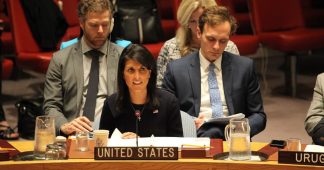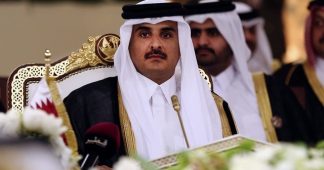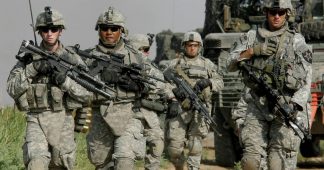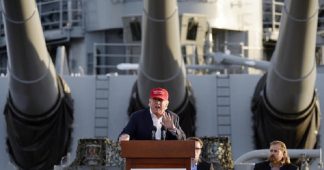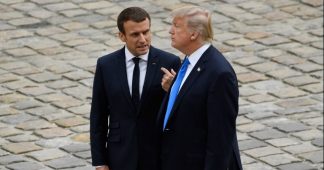Secretary of State Colin Powell brandished a vial he claimed contained anthrax at the UN Security Council on 5 February 2003, and showed satellite photos of secret sites where chemical weapons were supposed to be manufactured. He later admitted the story was fabricated, but not before it had served as a PR launch pad for the Iraq war.
On 11 December 2017 the US ambassador to the UN, Nikki Haley, appeared with huge fragments of what she claimed was an Iranian missile that had missed its target. She maintained it had been fired from Yemen at a Saudi civil airport, ‘a G20 country’ and had ‘the potential to kill hundreds of innocent civilians in Saudi Arabia … Just imagine if this missile had been launched at Dulles Airport or JFK. Or the airport in Paris, London or Berlin.’
Never mind it could not have travelled that far. Once again, fear is being manufactured to justify war: 14 years after destroying Iraq, the US government has Iran in its sights.
Haley’s lack of imagination might be entertaining were the subject not so serious. In 2003 Powell criticised the existence of ‘sinister’ links between Saddam Hussein and Al-Qaida. This was replayed on 1 November 2017: the CIA published a cache of documents seized in Pakistan when Osama bin Laden was assassinated, supposed to prove the existence of improbable links between some of Bin Laden’s successors and Iran’s (Shia) leadership.
It’s as if Washington has already forgotten the support – real, not alleged – it gave Bin Laden when he fought the Soviets in Afghanistan, or Ronald Reagan’s illegal arms sales to Iran when he sought funding for his far-right friends in Nicaragua.
Back then, no one used this as a pretext for declaring war on the US. Today, Saudi Arabia, Israel and many US leaders are spoiling for a fight with Iran, which faces internal unrest. The influential Republican senator Tom Cotton, possibly the next head of the CIA, can hardly wait. He thinks that all the US’s diplomatic challenges (Iran, North Korea, China, Russia, Ukraine) have a ‘military option’. And the danger posed by Iran, which he believes to be greater than that from North Korea, would justify a ‘primarily naval and air attack against its nuclear infrastructure’ (1).
President Obama noted two years ago that Iran’s military budget was only one-eighth of that of US allies in the region and one-fortieth of the Pentagon’s. Nonetheless, the sound of war drums against the ‘Iranian threat’ is almost deafening. In such a climate of psychological war, how smart was it for the French foreign minister to criticise Iran’s desire for ‘hegemony’ last December in Washington?
This article appears in the excellent Le Monde Diplomatique, whose English language edition can be found at mondediplo.com. This full text appears by agreement with Le Monde Diplomatique. CounterPunch features two or three articles from LMD every month.
